 Here’s the conclusion of an essay on the theme of “decision-free photography,” a Nikon ad slogan of the time, that I contributed to Popular Photography 25 years ago. (Click here for the first half.) Intended for publication in 1989 and submitted during that sesquicentennial year, it got held over till March 1990. Pop Photo paired it with a less skeptical paean from Editorial Director Jason Schneider under the rubric “The Great Automation Debate,” billing us as “two leading curmudgeons.”
Here’s the conclusion of an essay on the theme of “decision-free photography,” a Nikon ad slogan of the time, that I contributed to Popular Photography 25 years ago. (Click here for the first half.) Intended for publication in 1989 and submitted during that sesquicentennial year, it got held over till March 1990. Pop Photo paired it with a less skeptical paean from Editorial Director Jason Schneider under the rubric “The Great Automation Debate,” billing us as “two leading curmudgeons.”
To this they added a commentary from Charles Hagen, “Photography As Art: Truth or Illusion?” and one by Arthur Goldsmith, “Reinventing the Image,” on digital photojournalism, combining them all into a “Photography at the Crossroads” cover feature. You’ll find it all online here. I’m republishing my portion of that cluster to mark the lesser milestone we celebrate this year, the 175th anniversary of the medium’s public birth. — A. D. C.
•
“The Great Automation Debate”
Let’s consider, briefly, just a few of the redirections of energy and shifts of emphasis in image-making activities that will result from the automation of cameras. To start with a simple example, when you relieve the camera user of decisions concerning the aperture setting, you reduce drastically his or her control over the quality of space in which the event of the image takes place. Such a system prioritizes framing and moment of exposure; it assumes that photography is about things rather than their contexts. So there’s a major philosophical issue underlying what seems to be a merely technological one.
This automation of cameras is taking place alongside the introduction of another new technology, that of digitized imagery. Even those who continue to use traditional films rather than still-video diskettes will probably find themselves involved in some level of interaction with this new possibility. In conjunction with simple home computers, the new cameras will make possible not only the encoding of images but the generation of virtually infinite permutations and variations thereof: not only everyone a photographer but everyone a picture editor, a photocollagist and photomonteur.
Equally important is the fact that this technology innately deemphasizes the physicality of art. What these systems offer, as a tangible final product, is a standardized, small-scale print-out on a sheet of paper, indistinguishable as a type of object from the print-out anyone else might generate. These print-outs can, of course, be used as matrices, transferred in various ways to other physical forms; no doubt they will be by some. But it is in the nature of such systems to focus attention on the differences between the images created with them, rather than on the distinctions between the objects which embody those images.
Furthermore, the primary display format for these images will be the video screen itself. If one can create, store, and call up at will an image — indeed, a wealth of images — on the monitor, why bother to derive a “hard copy” version of any unless and until a particular purpose for same is identified? These new systems permit image production without object production as a necessary concomitant. Thus they encourage a relationship to the work of art not as precious object but as dematerialized image and idea.
This is only a sample of the attitudes embedded in the new technology. We need to be examining those attitudes, rather than taking them at face value. The only truly effective way for any of us to come to an understanding of the degree to which “the medium is the message” in any form of photography is to study the medium itself — that is, the process of production. Only in that fashion can one discover the medium’s inherent biases — the kinds of ideas and information whose transmission it facilitates, the kinds that it inhibits or obstructs. Only through the direct experience of craft can one encounter first-hand the limitations, the controls and the range of variables at the disposal of the practitioner.
It’s important to remember that such a relationship to craft was inherent to photography at the beginning. Up until 1888 — that is, for the first half-century of the medium’s existence — anyone who wanted to make photographs had to practice photography. If you worked with the direct-positive processes (such as the daguerreotype or the tintype) you developed your exposed plates immediately. This was true also of the positive-negative processes that prevailed through the 1860s — the so-called wet-plate methods, which utilized glass sheets on which the emulsion had been freshly coated.
Even the introduction of dry plates did not significantly reduce the photographer’s involvement with the craft; it only provided some breathing room between exposure of the negative and production of the print. Short of hiring a personal assistant to handle darkroom work, the person who wanted to make photographs had no choice but to become knowledgeable in all areas of the craft, to think his/her work through from exposure to print.
George Eastman changed all that, permanently, when he introduced the first Kodak camera in 1888. “You press the button, we do the rest,” read the slogan under which it was advertised. The camera user received the loaded camera, ready to go; after making 100 exposures s/he shipped the film, still in the camera, back to the company for processing and printing.
Not only did this make it unnecessary for the camera user to process his/her own film and make his/her own prints, it actually made that impossible, at least at first: the film for this camera initially was such that amateur processing was impracticable.
Historians of photography are prone to celebrating this as a triumph. I’d suggest that, in fact, it was in another sense a setback of major proportions. This was a time when a continually widening segment of the public was acquiring craft expertise in the first democratically-accessible visual communications system. The Kodak No. 1 — by appealing to people’s capacity for laziness — allowed the “luxury” of foregoing any study of that craft. In separating the act of negative exposure from development and printing, Eastman’s system effectively undermined the impulse to learn the process of photography, by rendering such knowledge unnecessary.
A year later, Kodak introduced a new film, on a plastic base, which gave amateurs the option of either developing and printing their own images or letting Kodak “do the rest.” But the die had already been cast. By permitting camera users to remain ignorant of the processes they were employing, this approach to photography remystified the medium — made of it a prototypical “black box” — right at the juncture when its demystification was underway among the population at large.
As a result, globally, there is now an enormous population of camera users, only a tiny fraction of which actually practices photography. The two functions, initially integral to each other, have been severed in what I can only suggest is the photographic equivalent of pre-frontal lobotomy. So it’s no coincidence that, in a culture which produces billions of photographs annually, much of the population still believes that cameras take pictures, that photographs don’t lie, that seeing is believing. These are ideas of which photo students are effectively disabused by their second semester of coursework. They’re ideas of which an entire culture could be disabused by a widespread emphasis on media education.
What we’re getting instead is an endless series of variations on the theme which, in the 1940s, was summed up in manuals and courses promising “Photography Made Easy.” (To counteract this, some of you may recall, the late photojournalist W. Eugene Smith taught a course at the New School for Social Research in New York City that he titled “Photography Made Difficult.”) Under the banner of automation, the medium is being remystified yet again, at exactly the moment when what we need is a more thoughtful, complex, problematic relationship to the creation of photographic images.
Precisely because the technology is becoming bewildering once more to amateur and pro alike, it’s time for public discussion of the decisions that are being made for us in the name of “decision-free photography.” We have to know how these new devices work; talking about them as “decision-free” doesn’t serve that end. Even the casual camera user now needs a theory of photography, one that will help him or her understand not only what takes place during the making of a snapshot but also what happens between the moment a photojournalist makes an exposure in the field and the arrival of a Scitexed version of that image in the next morning’s paper on the doorstep.
That would be a form of the “media education” McLuhan called for, an embrace of decision-making, difficulty, and uneasiness as the obligation of informed citizenry in our photographic culture. Isn’t that what all of us — including the photography industry — should be encouraging as we go into the medium’s 151st year?
(Part 1 I 2)
•
This post supported by a donation from the Estate of Lyle Bongé.


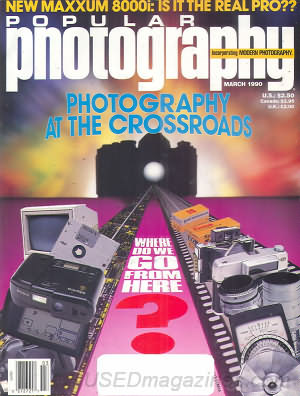
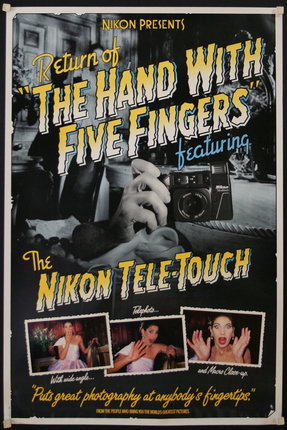
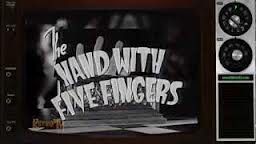
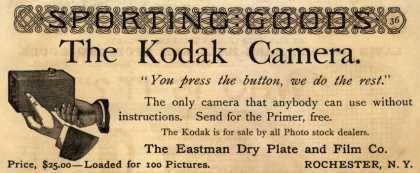
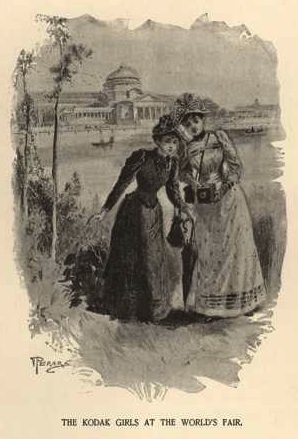
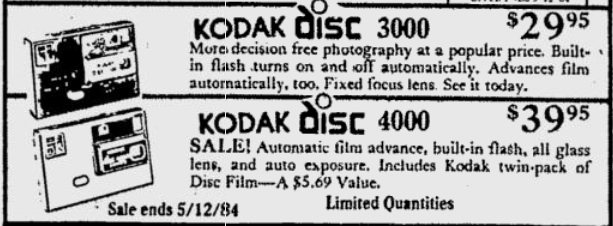
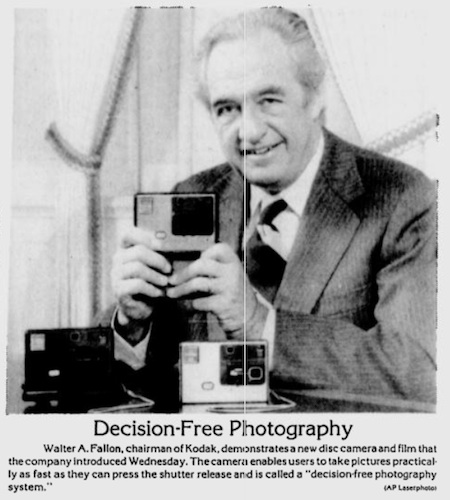




Allan,
To your point, look at a manual for the better digital cameras. In the interest of adding features and, because each feature adds very little cost, these manuals are massively long and complex.
I am not a tech novice. It is not the technology that intimidates. When you bought a Nikon F, the manual had perhaps 1/10 the text that these do. If you do not own one, I would suggest going to one of the manufacturer’s sites and downloading one. The Nikon D800 is so opaque to border on the comical. The manual for my new Fuji XT-1 might be worse.
The result is that most users are completely in the dark with what is happening. When a dial moves inadvertently, panic sets in.
Best,
Chuck
At the other end of the spectrum, as the alternative to “decision-free” cameras, we have the digital cameras you describe, offering so many choices as to have a paralytic effect. (Minor White’s description of some 1970s analog cameras as “hopelessly sophisticated” comes to mind, as does the concept of “decision fatigue.”)
I use a little Olympus F1.8 HD; my wife Anna uses a Nikon D5100 digital SLR. The manuals for both are impenetrable, the range of options overwhelming. And we’re just talking about the pre-exposure menus. Post-exposure possibilities boggle the mind.
So there’s no denying the appeal of “decision-free” systems. “Freedom of choice / Is what you got / Freedom from choice / Is what you want.” (Devo)